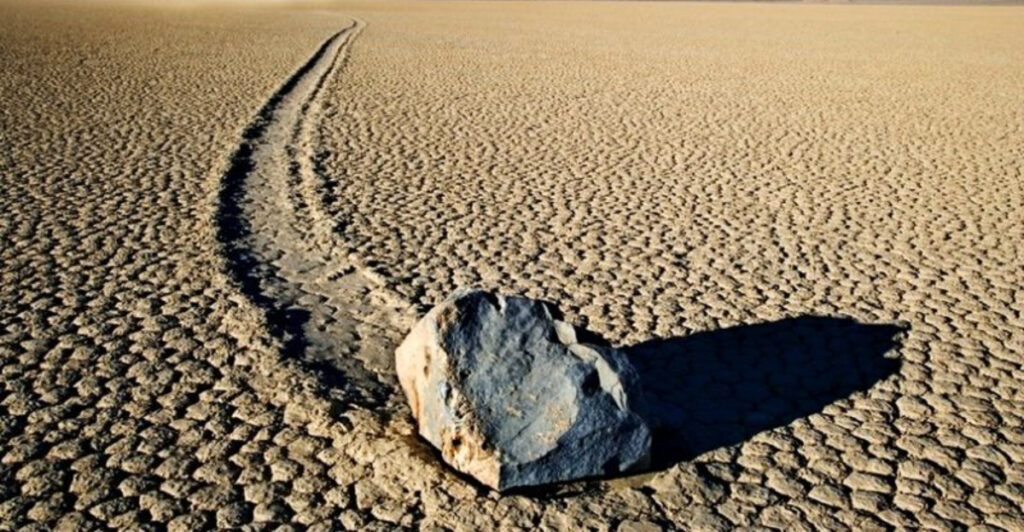Death Valley National Park might sound harsh and uninviting, but it’s actually filled with stunning natural wonders. This massive park holds incredible sights from salt flats that stretch for miles to colorful canyons and towering sand dunes. Whether you’re a photographer, hiker, or just love amazing views, Death Valley offers unforgettable experiences in one of America’s most unique landscapes.
1. Sunrise Magic at Zabriskie Point
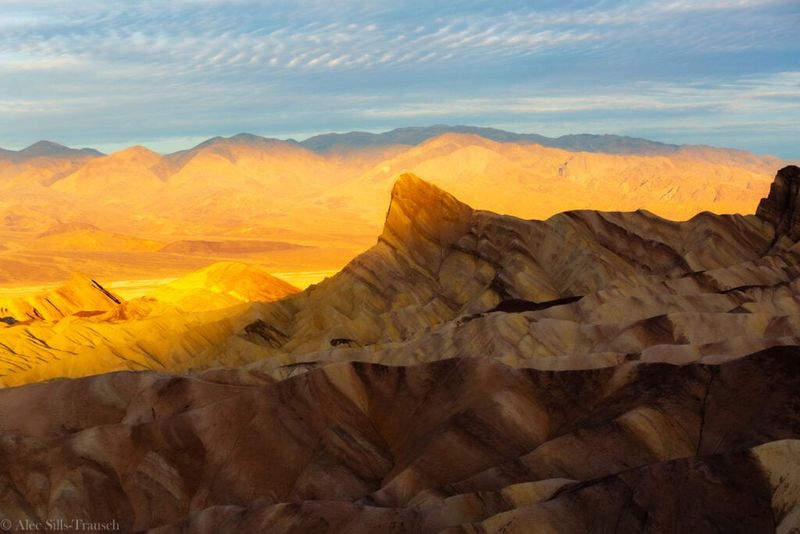
Golden light spills across rippled badlands, transforming ordinary rock into a masterpiece of shadow and color. Photographers and early risers gather at this famous overlook to witness dawn’s first rays illuminate the folded clay hills in amber, rust, and surprising hints of lavender.
The view stretches across to Manly Beacon and the distant Panamint Mountains, creating a scene worthy of any postcard. Arrive 30-45 minutes before sunrise to claim your spot.
As the sun climbs higher, watch how the landscape changes minute by minute, revealing new textures and details you’d miss later in the day.
2. Walk Across Badwater Basin
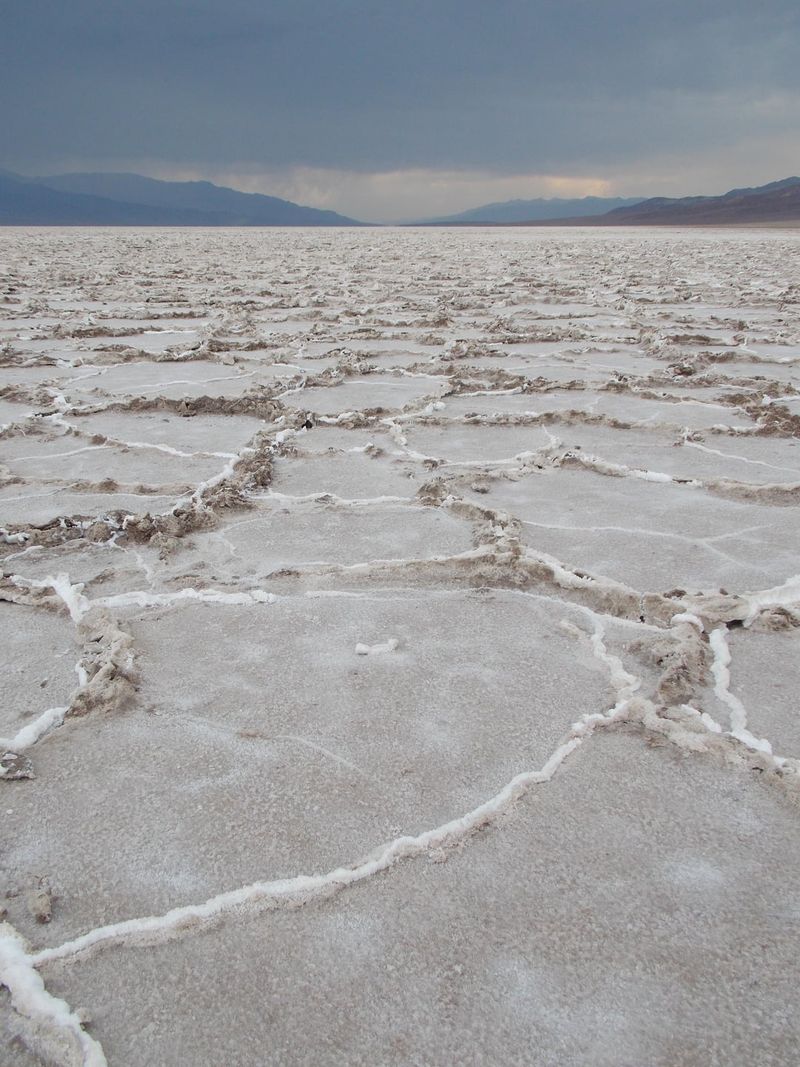
Standing 282 feet below sea level, your feet crunch across geometric salt polygons stretching toward distant mountains. This vast salt flat marks North America’s lowest point, where an ancient lake once filled the valley before evaporating into this otherworldly landscape.
The salt crust forms perfect hexagons that seem to extend infinitely. After rare rainfall, the basin transforms into a shallow mirror, reflecting mountains and sky in perfect symmetry.
Venture beyond the boardwalk where most visitors stop, and you’ll discover the true scale of this remarkable place—where silence and space create a profound sense of solitude.
3. Sunset Among Mesquite Flat Sand Dunes
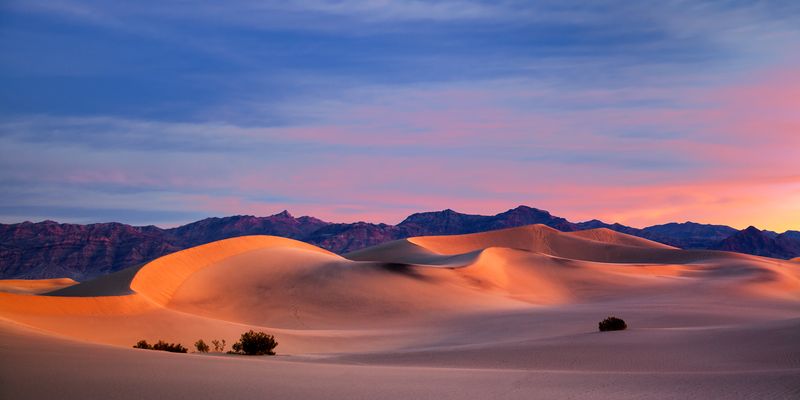
Wind-sculpted waves of sand rise against purple mountain shadows as day fades into evening. Unlike many dune fields that require difficult treks, these beautiful formations sit just off the main road, inviting exploration of their ever-changing ridges and valleys.
Footprints vanish overnight as gentle winds continually reshape the landscape. Photographers chase the perfect light while families climb barefoot to the crests, sometimes sliding down on makeshift boards.
Stay after sunset and you’ll witness the park’s famous dark skies emerge—where stars appear so numerous and bright they seem close enough to touch, creating nature’s most spectacular ceiling.
4. Artist’s Drive Rainbow Hills
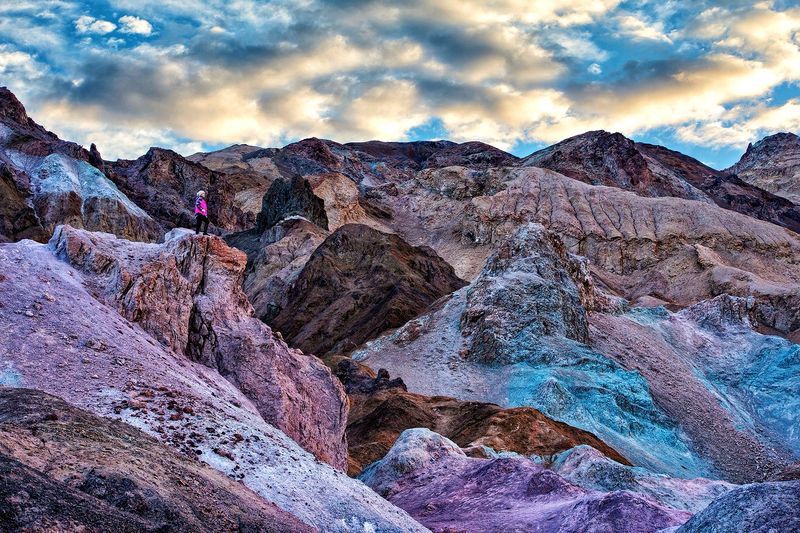
Mother Nature’s paint palette exploded across these ancient volcanic hills, creating one of Death Valley’s most colorful attractions. Minerals in the rock—iron, manganese, copper—have oxidized over millions of years into surreal swirls of pink, green, blue, and ochre.
The 9-mile one-way loop road winds through canyons before reaching the famous Artist’s Palette viewpoint. Each turn reveals new perspectives as the changing sunlight brings different colors to life throughout the day.
Pull over at several turnouts to explore these psychedelic hillsides up close. The best time to visit is late afternoon when the low-angle sunlight intensifies the vibrant hues.
5. Golden Canyon Adventure
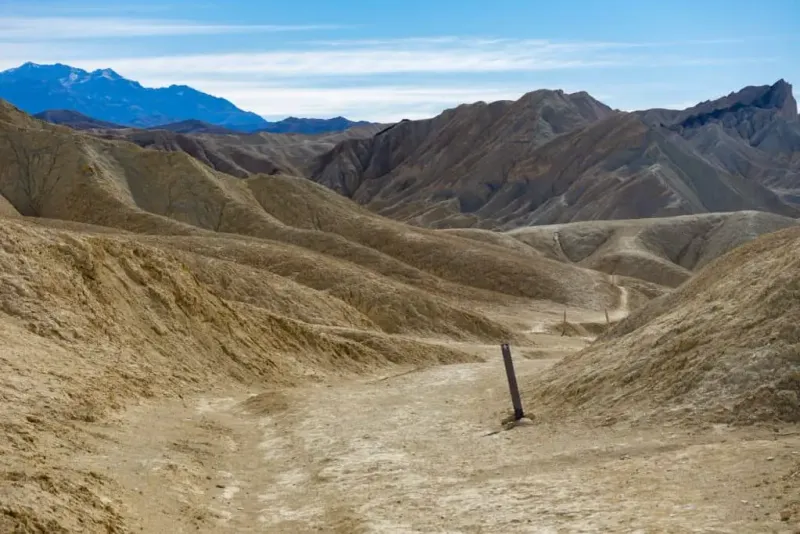
Amber walls rise on either side as you step into a labyrinth carved by ancient waters. This moderately easy trail invites hikers of most abilities to experience Death Valley’s dramatic geology up close and personal.
Sunlight plays across the textured canyon walls, highlighting millions of years of Earth’s history in layers of stone. The path gradually narrows as you venture deeper, creating a sense of discovery around each bend.
For the ambitious, connect to the Badlands Loop or Gower Gulch for a longer journey through this golden maze. Morning hours offer the best light and cooler temperatures for this unforgettable trek through time.
6. Dante’s View Overlook
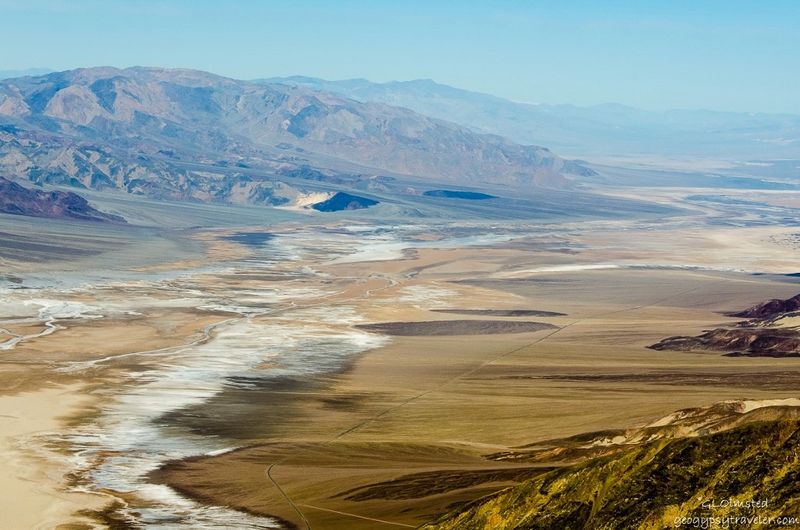
Perched 5,600 feet above the valley floor, this mountaintop viewpoint offers the most dramatic panorama in the entire park. From this lofty perch, the vast salt flats of Badwater Basin appear as a white ribbon threading between mountain ranges.
On clear days, you can simultaneously see both the lowest point in North America and Mount Whitney, the highest point in the contiguous United States. The temperature here is typically 20 degrees cooler than the valley floor, providing welcome relief during hot months.
Night visitors are rewarded with spectacular stargazing opportunities as the Milky Way arcs overhead in dazzling clarity. Bring binoculars to enhance both daytime vistas and nighttime celestial viewing.
7. Ubehebe Crater’s Volcanic Landscape
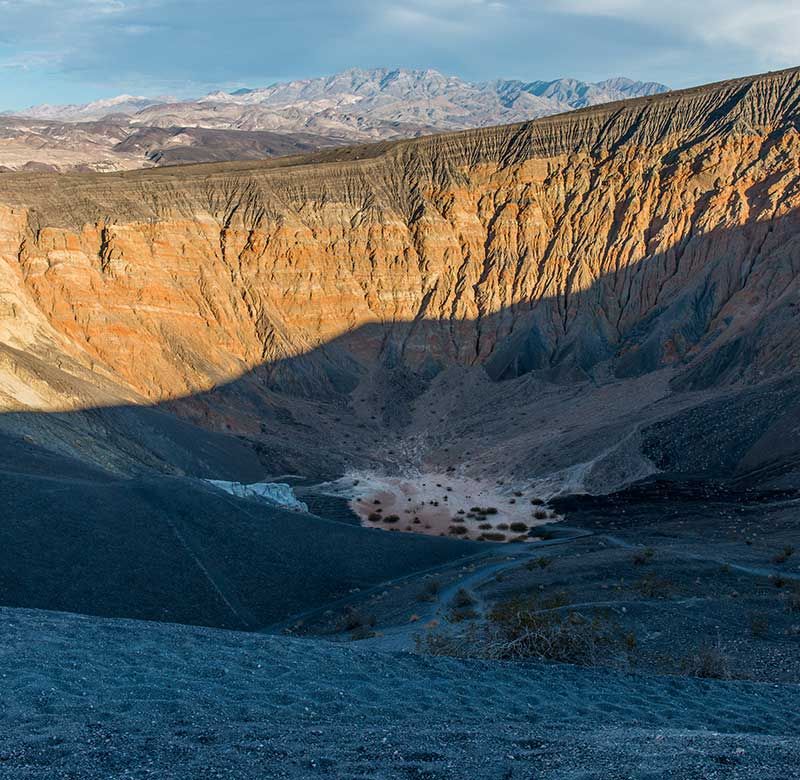
A massive hole punched into the desert floor reveals Earth’s explosive power. This half-mile-wide crater formed just 2,100 years ago when magma hit groundwater, creating a steam explosion that blasted rock and debris across the landscape.
The walls display stunning layers of red, black, and tan volcanic materials. Adventurous visitors can follow the steep path to the crater floor, while others prefer the 1.5-mile rim trail offering perspectives from all angles.
The stark contrast between the dark volcanic ash and the surrounding desert creates dramatic photo opportunities. Visit in morning light when shadows accentuate the crater’s depth and texture—a reminder of the dynamic forces still shaping our planet.
8. Stargazing Under Dark Skies

The Milky Way stretches horizon to horizon in a brilliant cosmic river impossible to see from light-polluted cities. Death Valley holds the prestigious Gold Tier Dark Sky designation, making it one of the darkest places in the United States for experiencing the night sky in its full glory.
Without artificial light interference, thousands of stars, planets, and even distant galaxies become visible to the naked eye. The park hosts special astronomy programs during the annual Dark Sky Festival, though any clear night offers spectacular viewing.
Badwater Basin and the Mesquite Dunes provide ideal stargazing locations with wide-open horizons. Bring a red-filter flashlight to preserve your night vision while navigating this celestial wonderland.
9. Harmony Borax Works History
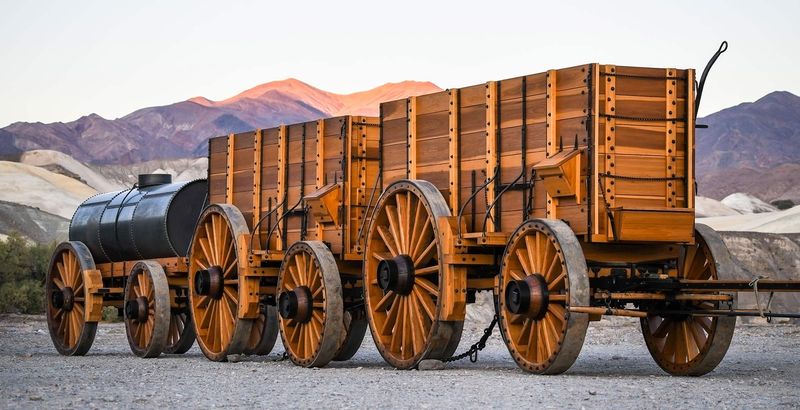
Weathered wooden wagons tell the story of Death Valley’s surprising industrial past. This well-preserved historic site showcases the famous 20-mule team wagons that hauled valuable borax 165 miles across the desert in the 1880s, helping shape America’s understanding of this harsh landscape.
A short interpretive trail winds through rusty machinery, processing tanks, and worker housing foundations. Informational panels explain how miners extracted the white mineral that became known as “white gold” during the borax boom.
This glimpse into pioneer determination provides context for understanding Death Valley beyond its natural features. The site is especially atmospheric in early morning or late afternoon when long shadows bring the abandoned workings to life.
10. Mysterious Racetrack Playa
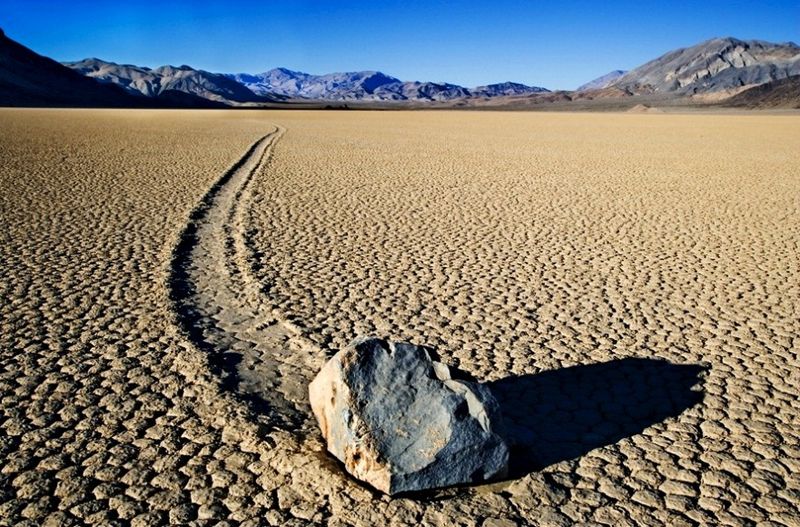
Rocks that move by themselves across a dry lakebed have puzzled visitors for decades. This remote playa features the famous “sailing stones” that leave long trails behind them as they mysteriously migrate across the flat surface—a phenomenon scientists have only recently explained.
The contrast between the cracked clay surface and the dark “Grandstand” rock formation rising from the playa creates an eerily beautiful landscape. Reaching this isolated wonder requires a high-clearance vehicle and careful planning, but rewards visitors with one of Death Valley’s most unusual sights.
Dawn visits offer the most magical experience as sunrise light skims across the textured playa surface. Remember to practice “leave no trace” ethics in this fragile environment where footprints can last for years.

